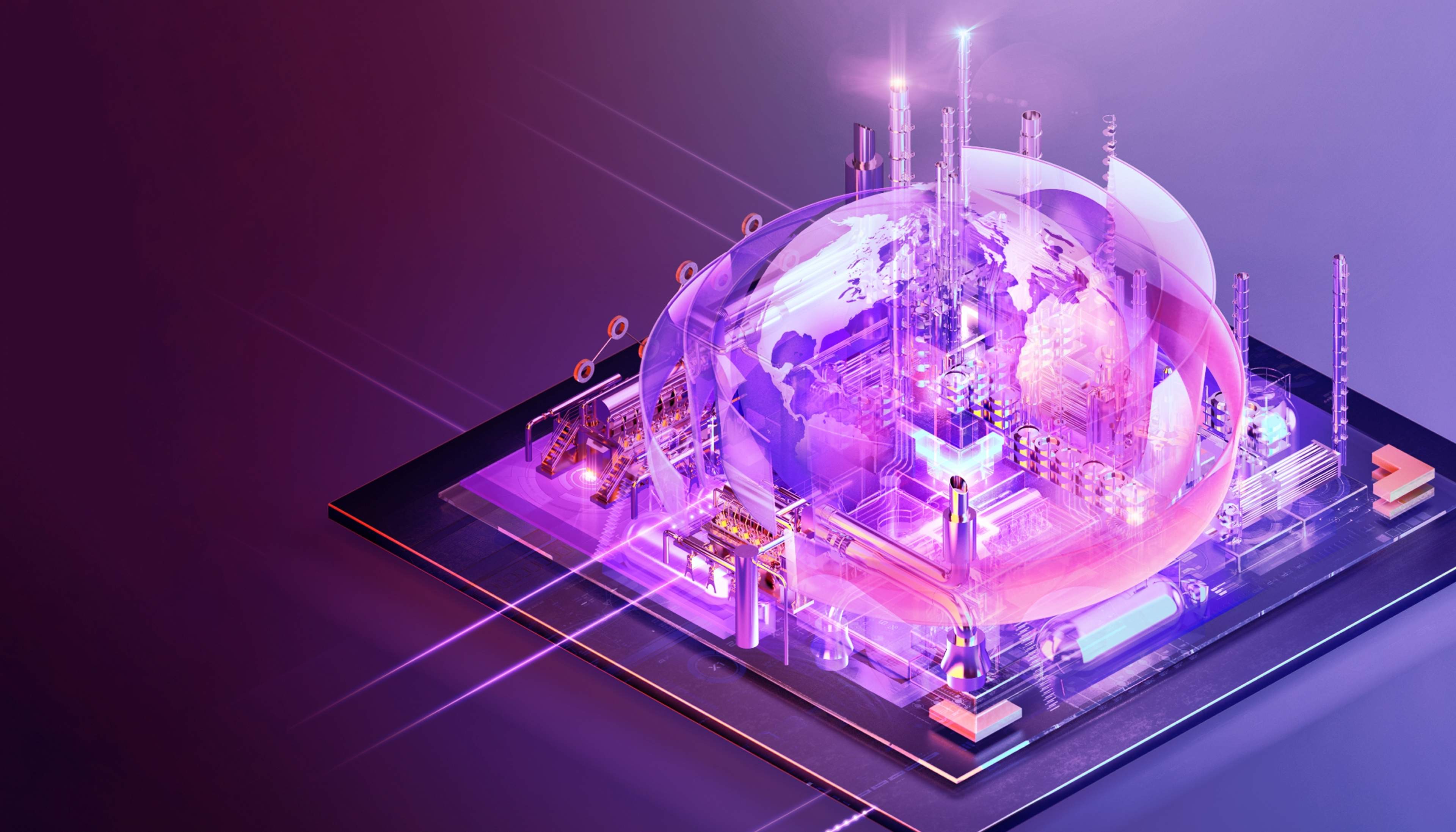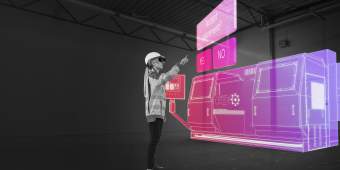From connected sensors to robotics, Industry 4.0 promises a new wave of IoT innovation in the industrial sector. But that promise doesn’t always match up with reality. Executives are overwhelmingly unsatisfied with their company’s innovation performance—no matter how much they’re investing.
What’s the underlying reason? According to a team of Harvard Business Review (HBR) co-authors, companies regularly face barriers in their day-to-day routines, operations, and mindsets that can stifle the innovation process.
TXI and Dickson (a leading provider of environmental monitoring technology) have seen—and overcome—these innovation barriers firsthand. Together, we’ve developed strategies that can help other companies do the same.
In this piece, we’ll start by outlining each common barrier to innovation. Then, we’ll use Dickson’s story to show how companies can break them down.
Background: Why is innovation key to success in Industry 4.0?
In Industry 4.0, industrial companies leverage interconnected IoT devices and apps to efficiently collect data, boost productivity, and reduce manual labor.
But customers have dynamic needs—and the technologies powering IoT products are constantly changing. Innovation is the key to consistently helping customers get the most out of industrial IoT (IIoT).
For example, let’s say a pharmaceutical company uses wifi-connected data loggers to monitor the temperature of flu vaccine refrigerators throughout its supply chain.
In a year with low vaccine demand, it might be enough to monitor environments using barebones wifi connectivity and a web-based app. But in a high-demand year (say, during a bad flu season), the company likely needs the fastest wifi technology available to quickly transmit temperature data.
The company may also need a mobile app so workers can continuously monitor vaccines on the go. Factor in a concurrent viral outbreak—like a COVID-19 wave—and it also becomes critical to differentiate vaccine storage equipment in-app (e.g., “Flu Refrigerator 1” versus “COVID-19 Refrigerator A”).
Innovative industrial companies can deliver IIoT solutions that adapt to customer needs and the latest technology. But the reality is that many companies routinely face barriers to innovation that make it difficult to satisfy customers and stay competitive.
In the next section, we’ll look at three of the biggest innovation blockers in Industry 4.0.
What are the barriers to innovation in Industry 4.0?
Industrial companies trying to establish themselves in Industry 4.0 often face three common innovation barriers:
Isolated experience with hardware or software innovation cycles
Limited access to data
Widespread resistance to change
Let’s dive into each of these to understand how they stand in the way of consistent innovation.
Barrier 1: Isolated experience with hardware or software innovation cycles
In Industry 4.0, innovative companies often build both physical devices (like data loggers) and digital companion apps, which work together to quickly transmit data and enable analytics.
These companies typically come to the table with specific experience in either hardware or software. The problem: hardware and software have fundamentally different innovation cycles that can be tough to grasp.
With software innovation, for instance, the rate of change is rapid. Want to add a new reporting tool to your environmental monitoring app? You can design, build, and user-test a version in a matter of weeks. If there are bugs upon deployment, you can quickly push an update with relatively minimal impact to your customers’ operations.
Hardware innovation is different. Change happens at a more deliberate pace and involves extensive forethought. That’s in part because each new product advancement needs to last for years at a time. If it doesn’t, the impact can be costly.
For example, if a data logger is found to pose a high overheating risk, the manufacturer will need to issue a recall. But without a full fleet of functional data loggers, customers may be in the dark about their industrial environments. And in a worst-case scenario—like an unnoticed spike in temperature or humidity—that could mean a spoiled product batch.
The bottom line? Take a hardware-minded approach to building software, and you might be slow to develop your product and adapt to users’ needs. The reverse is also dangerous: building hardware as fast as software can result in serious product flaws. It’s important to understand how to navigate each kind of cycle—or risk stifling innovation.
Barrier 2: Limited access to data
Industry 4.0 innovators use a wealth of sensor and user data to build and refine IIoT products. But when it comes to collecting that data, industrial companies are often limited by their hardware’s sensory capabilities—and long hardware innovation cycles.
For example, let’s say a company wants to equip its environmental monitoring app with air quality reporting and analysis tools. To create helpful features, the company first needs to understand user needs (e.g., the pollutants they’re monitoring, or which thresholds matter in certain environments).
Still, it’s tough to gauge those needs without the right hardware to test with users. If the company’s logger fleet isn’t equipped to monitor air quality, it’ll need to roll out an updated model—at the careful pace typical of hardware innovation. As a result, there may be a large time gap between ideation and implementation that makes it hard to continuously build innovative products.
The good news? Today, industrial companies have access to affordable, off-the-shelf sensors with various tracking capabilities and cloud connectivity. The key is to proactively outfit products with core technologies (like a combination of air quality, pressure, and temperature sensors) that anticipate customers’ needs.
Barrier 3: Resistance to change
Effective product innovation requires embracing change—both in technology and as a company. In the industrial sector, though, it’s often tough to get everyone on board. And resistance to change can stifle innovation.
Consider, for instance, the adoption of cloud storage. Fifteen years ago, many industrial companies were wary of sending IoT data off-premises. That’s in part because of very real security concerns. In the wrong hands, that data might offer a glimpse into customers’ operations or inventories.
But today’s Industry 4.0 leaders didn’t reject cloud storage. Instead, they researched and adopted the latest cybersecurity measures, like end-to-end encryption and a zero-trust security model. As a result, these companies gained an edge on the competition. And their customers enjoyed the benefits of cloud storage early on.
Industrial companies don’t have to jump at every new technology. But they should be open to exploring the benefits and brainstorm interventions to counter the negatives. This way, they can identify ways to make incremental product changes that deliver more value to users. And at an organizational level, this cultural change can encourage a product innovation mindset rooted in curiosity and iterative improvement.
3 strategies for overcoming barriers to innovation
The innovation blockers we’ve discussed can make it difficult to gain a foothold in Industry 4.0. But with the right strategies, industrial companies can overcome each barrier. Through our relationship with Dickson, we’ve identified three strategies that can help:
Build a culture of innovation
Find the right innovation partner
Continuously learn about Industry 4.0 technologies
In this section, we’ll use Dickson’s story to show how any industrial company can leverage these strategies to become an IIoT innovation powerhouse.
Strategy 1: Build a culture of innovation
A strong innovation culture enables every new product update or app feature to consistently meet users’ needs. How we define it: an organizational culture built on the value system we call product innovation.
Product innovation balances the needs of users, companies, and the technology available. Experienced innovators avoid assuming what’s best for any user group or company stakeholder. Instead, they embrace curiosity, talking with as many people as possible to help brainstorm ideas. Then, they hone in on a workable solution to keep everyone’s needs in balance. Along the way, they regularly check in with users—and use failure to guide future product iterations.
Over more than two decades, Dickson has gradually evolved its innovation culture to ideate and deliver satisfying products. One major milestone: embracing wifi and cloud connectivity for its breakthrough IIoT ecosystem.
In the mid-2000s, Dickson was primarily selling cellular-based data loggers. But wifi connectivity was quickly gaining steam in the consumer world—and seemed likely to promise industrial customers faster, higher-capacity data transmission.
So TXI made a pitch: prototype a wifi-connected logger that could transmit data to a cloud-enabled companion app. Dickson embraced the idea.
Together, Dickson and TXI leveraged a product innovation approach to build an early version of the ecosystem that would later become DicksonOne, Dickson’s flagship environmental monitoring solution. Our teams engaged with users about their product needs. We tested prototypes for usability. Each iteration gave us more user data that helped us make continuous improvements and ultimately bring DicksonOne to market.
Over time, this product innovation approach has become a cornerstone of Dickson’s culture. Today, we’re working with Dickson to make proactive, incremental changes that keep DicksonOne a leading-edge product.
Strategy 2: Find the right innovation partner
An innovation partner comes to the table with product development expertise, strategic thinking, and a collaborative mindset—in other words, all the right ingredients to create usable products. And whether they’re helping build out a product strategy or engaging with key stakeholders, the right partner can easily adapt to a company’s needs to power ongoing innovation.
(Not sure what to look for in an innovation partner? Check out our previous blog.)
As Dickson’s decades-long innovation partner, TXI has leveraged its product innovation mindset and expertise to…
Foster the trust that powers innovation. On our first project with Dickson, we embedded ourselves in the company’s sales team to better understand its order flow and operations. This embedded approach to partnership established a foundation of trust.
Over time, Dickson showed us company details that were traditionally kept internal. Thanks to our trust-centered relationship, we were able to clarify Dickson’s business needs and pave the way for breakthrough products like DicksonOne.
Refine an IIoT product strategy. Throughout our relationship, we’ve worked with Dickson to make forward-thinking decisions about its DicksonOne strategy. One critical move: adding a dedicated designer to the team.
Their design expertise has helped us identify and anticipate the product features most valuable to users, from a digital repository for calibration certificates to specialized reporting tools for COVID-19 vaccine storage.
Embrace change. Over the last two decades, Dickson has transformed from a hardware manufacturer into an industrial tech company. TXI has helped Dickson embrace this organizational shift—and consider how best to serve customers in this new role. In this latest stage of transition, we’re helping the company leverage DicksonOne to establish itself as a compliance partner for customers.
Strategy 3: Continuously learn about Industry 4.0 technologies
To keep IIoT innovation from stagnating, it’s important to stay curious about new technologies as they burst on the scene. In our relationship with Dickson, we helped spark that curiosity with the push for wifi-based loggers and a digital companion app. And today, the Dickson team has made curiosity and learning a part of its day-to-day routine.
In many cases, we’ll share ideas with each other about incorporating new digital tools into the DicksonOne ecosystem. Together, we’ll take the leap to see if it works. One of the best examples: our exploration of TimescaleDB.
A few years ago, TXI suggested that Dickson explore a new SQL database for DicksonOne. The company jumped at the idea. We did research about its implementation and did some testing within the ecosystem. And today, it’s a core enabling technology for DicksonOne.
Next in our series: How industrial IoT benefits more than the bottom line
By breaking down the barriers to innovation, Dickson’s been able to establish itself as a leader in Industry 4.0, generating massive revenue from its flagship DicksonOne product.
But IIoT innovation impacts more than just the bottom line. More on that in our next blog.
In the meantime, if you’re interested in breaking down your own innovation barriers, we’d love to start a conversation.




